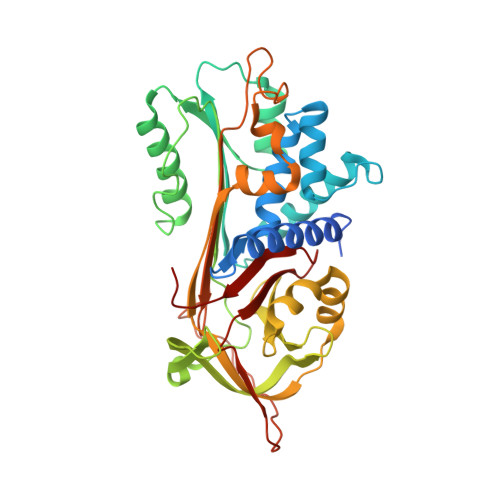Topography of a 2.0 A structure of alpha1-antitrypsin reveals targets for rational drug design to prevent conformational disease.
Elliott, P.R., Pei, X.Y., Dafforn, T.R., Lomas, D.A.(2000) Protein Sci 9: 1274-1281
- PubMed: 10933492
- DOI: https://doi.org/10.1110/ps.9.7.1274
- Primary Citation of Related Structures:
1QLP - PubMed Abstract:
Members of the serpin family of serine proteinase inhibitors play important roles in the inflammatory, coagulation, fibrinolytic, and complement cascades. An inherent part of their function is the ability to undergo a structural rearrangement, the stressed (S) to relaxed (R) transition, in which an extra strand is inserted into the central A beta-sheet. In order for this transition to take place, the A sheet has to be unusually flexible. Malfunctions in this flexibility can lead to aberrant protein linkage, serpin inactivation, and diseases as diverse as cirrhosis, thrombosis, angioedema, emphysema, and dementia. The development of agents that control this conformational rearrangement requires a high resolution structure of an active serpin. We present here the topology of the archetypal serpin alpha1-antitrypsin to 2 A resolution. This structure allows us to define five cavities that are potential targets for rational drug design to develop agents that will prevent conformational transitions and ameliorate the associated disease.
Organizational Affiliation:
Department of Medicine, University of Cambridge, The Wellcome Trust Centre for Molecular Mechanisms in Disease, Cambridge Institute for Medical Research, United Kingdom.














